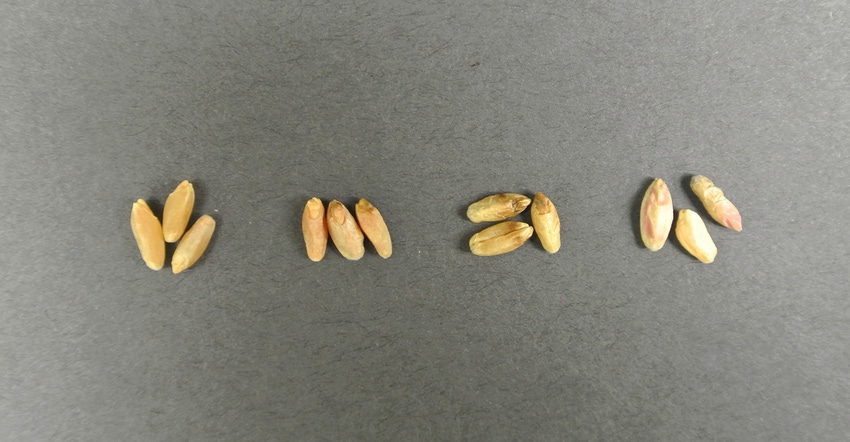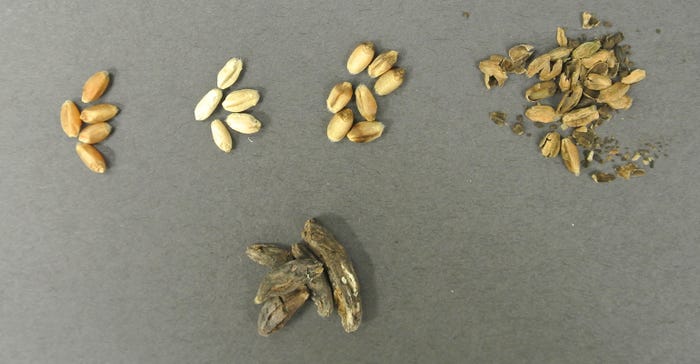January 30, 2018

There can be several causes of wheat seed discoloration, says Andrew Friskop, North Dakota State University Extension plant pathologist. Common discolorations and the causes are:
• Red Smudge. Tan spot can cause a reddish discoloration of the seed coat. It tends to be more common in durum than other wheat. Kernels remain relatively plump, as opposed to kernels infected with Fusarium.
• Scabby Seed. Fusarium head blight increases the presence of Fusarium-infected kernels. Scabby seed tends to be chalky, pink, shriveled and lifeless. Late season Fusarium infections during grain development may leave kernels asymptomatic and still harbor the Fusarium pathogen. When planted, Fusarium infected kernels will increase the risk for seedling blight and root rot.
• Black Point. As the name implies, black point refers to a brown to black discoloration on the embryo of the seed extending down the kernel. This common kernel discoloration is caused by several fungi, including the pathogen responsible for common root as well as saprophytic fungi associated with sooty mold of wheat heads.
• Dull gray-green. Common bunt causes infected kernels tend to look dull gray-green and be filled with black dusty spores. Grain lots with noticeable amounts of common bunt will have a fishy odor.
• Black bodies. Ergot bodies (sclerotia) are irregularly shaped fungal structures colored black to purple. Ergot bodies can resemble the size of a kernel or be 2-4 times larger. The interiors of the bodies are white.
 KERNEL CLUES: Discolored kernels are a tip off that feed may be infected. From left to right are healthy kernels, Fusarium-infected kernel, black point-infected kernels, common bunt-infected kernels and (bottom) ergot.
KERNEL CLUES: Discolored kernels are a tip off that feed may be infected. From left to right are healthy kernels, Fusarium-infected kernel, black point-infected kernels, common bunt-infected kernels and (bottom) ergot.

No mark
Unfortunately, signs of one of the most common seed borne diseases can’t be seen on the kernel, Friskop says. Common loose smut doesn’t cause any kernel discolorations. Germination rates will be normal. The fungus remains in the embryo of the kernel and grows systemically with a developing plant. When a wheat spike emerges from a leaf sheath, the spike will be replaced with dusty black spores and no kernels will develop. Winds will displace the spores on the head and leave an empty rachis.
Source: ND Crop and Pest Report
You May Also Like




